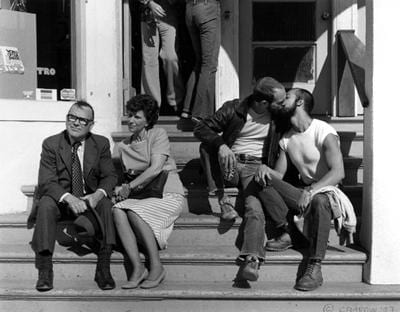UPDATE: 21 Sep, 2011 – We Were Here is opening in Toronto on Friday, Sep 30 at the Carlton Cinemas, 20 Carlton St, Toronto. There will be a series of events that weekend featuring one of the film’s subjects, Ed Wolf.
Friday, Sep 30, 7:00 pm – Q & A with film subject Ed Wolf
Friday, Sep 30, 9:15 pm – Q & A with film subject Ed Wolf
Saturday, Oct 1, 1:20 pm – Panel discussion: Connecting the Past to the Present
Saturday, Oct 1, 4:00 pm – Panel discussion: Women on the Front Lines
Saturday, Oct 1, 7:00 pm – Q & A with film subject Ed Wolf
Saturday, Oct 1, 9:15 pm – Q & A with film subject Ed Wolf
Check your listings for additional showtimes.
wewereherefilm.com.
16 May 2011 – On June 5, 1981, 30 years ago, the US Centers for Disease Control reported a cluster of five gay men in Los Angeles who had come down with puzzling, and sometimes lethal, cases of pneumocystis pneumonia. You know what happened next.
Director David Weissman reviews the early days of the AIDS epidemic in San Francisco in his film We Were Here.
“HIV arrives first in San Francisco in probably ’76,” says San Francisco gay organizer Paul Boneberg. “By 1979 probably 10 percent of the gay men in that crowd were infected. By the time we discover that there is such a thing as AIDS in June of 1981, roughly 20 percent are infected. And by the time we get the test, so you can find out if you were, nearly 50 percent were infected.”
By 1997, the time antiretroviral therapies were saving so many lives, 15,548 San Franciscans had died.
This first half of the film is a beautiful series of recollections of those first horrible years when so many innocent young men were getting sick and dying. The subjects Weissman interviews, including – as well as Boneberg – Daniel Goldstein, Eileen Glutzer and Ed Wolf, are very gifted storytellers. Their skill contributes greatly to the film, adding a level of emotion that transcends the recitation of factual information and anger that so often inflects films in this genre.
Weissman spoke with Xtra‘s Peter Knegt. See the video below.
The second part of We Were Here examines the community support and the activist efforts in response to the political challenges facing the US gay community related to AIDS. The epidemic changed not only gay communities – there is a generation represented by only the very few who survive – but also the way mainstream society sees sexual minorities.
“Gay people were never seen as caregivers. They were seen as good-time people, having fun and being wild,” recounts Goldstein in the film. “All of a sudden we were the ultimate caregivers. It changed people’s view of the gay community in a huge way.”
The final part of the film is a hopeful analysis of how San Francisco’s gay community has built a new future that includes living with HIV.
“I would really like to be able to live long enough to know, ‘How does the epidemic actually come to an end… will it all finally, finally just stop?’”asks Wolf in the film.
We Were Here is beautifully shot and organized with compelling archival film and photography. It’s an excellent historical document – we should do more work like this to document Toronto’s gay stories – and, particularly if you have a connection to the San Francisco community, it’s a must see.

 Why you can trust Xtra
Why you can trust Xtra


